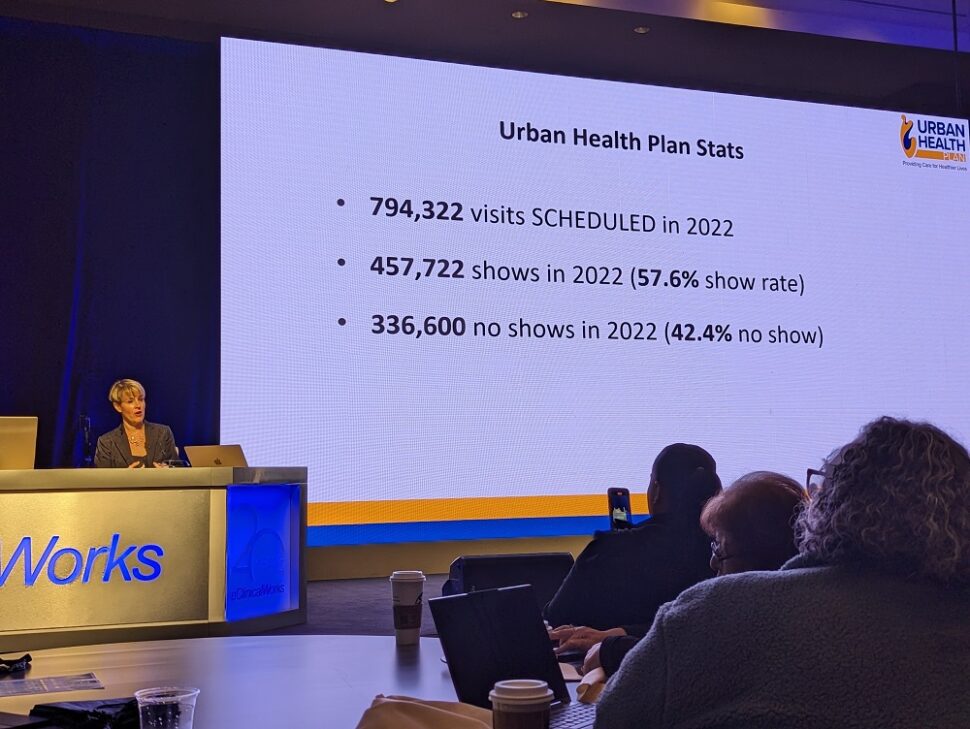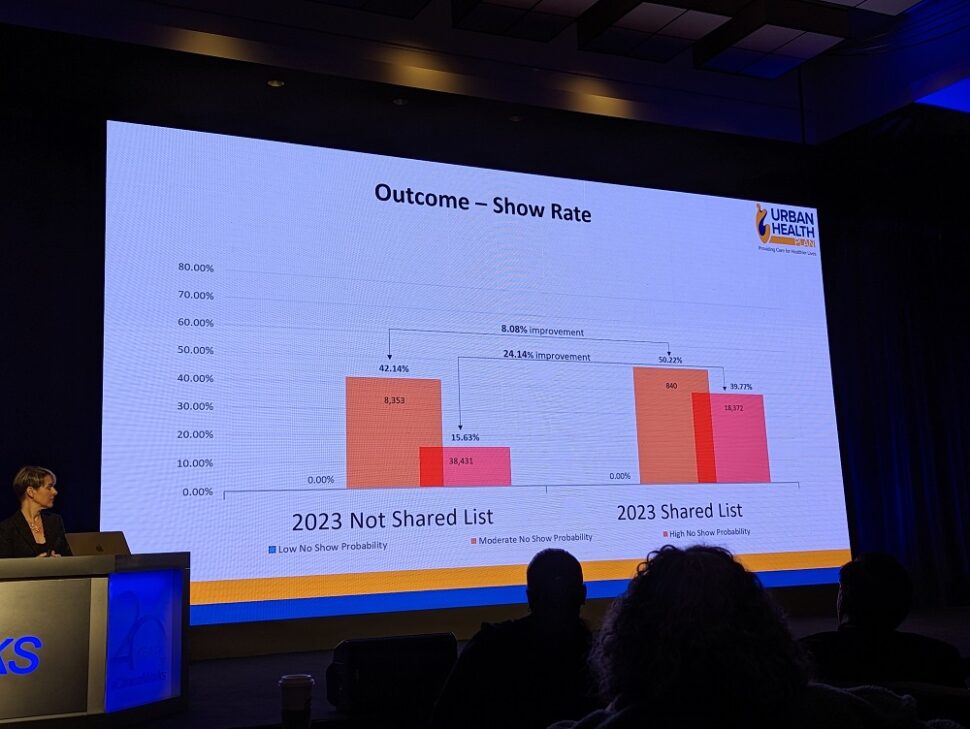Urban Health Plan, a federally qualified community health center with locations in New York City, uses artificial intelligence from eClinicalWorks to identify patients who are more likely to miss their appointments. Personalized outreach to these patients has resulted in a >50% drop in the no-show rate for this patient category. The savings has allowed Urban Health Plan to increase patient access through additional hours and more same-day appointment slots.
Alison Connelly-Flores, Chief Medical Information Officer at Urban Health Plan (UHP), presented these amazing results at eClinicalWorks’ Health Center Summit held in Boston, MA. Healthcare IT Today caught up Connelly-Flores after her presentation to learn the specifics on how the reduction in no-shows was achieved and the role that AI played.
No Shows Cause Operational Issues
UHP is a federally qualified community health center that operates twelve health centers, one mental health center, twelve school-based health centers and three part-time clinics, located in New York City’s South Bronx, Corona, Queens and Central Harlem communities. UHP offers a variety of primary care services along with 18 subspecialties.
 In 2022, UHP saw 86,000 patients through 457,000 visits but over 794,000 visits were scheduled – equating to a 42.4% not show rate (or the reverse a 57.6% show rate).
In 2022, UHP saw 86,000 patients through 457,000 visits but over 794,000 visits were scheduled – equating to a 42.4% not show rate (or the reverse a 57.6% show rate).
To address this, UHP did what most primary care providers do – they overbooked appointments knowing that not everyone will show up. This put a lot of stress on the organization. There would be days where too many patients would show up which would increase wait times and lead to poor patient satisfaction. The overbooking was also a contributor to staff burnout.
“No-shows create many operational problems at our organization,” said Connelly-Flores. “When patients don’t show up, it means that our staff wasted precious resources doing things like pre-visit planning and chart prepping. That time could have been spent doing something else. When we overbook it reduces patient access because we are using a slot that could have been available to someone who really needs to be seen.”
Using AI to Address No-Shows
With approximately 3,000 appointments each day, it is impossible for UHP staff to contact them all to remind them of their upcoming visits or to rebook them if the patients knows ahead of time they can’t make it. However, this personalized outreach has proven to be extremely effective at reducing no-shows. What UHP needed was a way to identify the patients who were most likely to miss their appointment so the could be prioritized for a personalized reminder.
UHP partnered with their EHR provider, eClinicalWorks to pilot a new AI solution that would do just that. Using historical data from their EHR, eClinicalWorks and UHP found that:
- 85,785 patients had a low no-show probability (ie: they were likely to show up for their appointment)
- 28,108 patients had a moderate no-show probability
- 34,028 patients had a high no-show probability
Armed with this information, the UHP team was able to focus their resources on contacting the patients in the moderate and high no-show probability categories. This included personalized text reminders, voice messages, and phone calls.
The results were dramatic.
 UHP was able to cut no-shows for patients who were highly likely to not to show up, by more than half. That patient population went from a dismal 15.63% show rate to a 39.77%. A dramatic increase. At the same time, patients in the moderate category improved from a 42.14% show rate to 50.22%.
UHP was able to cut no-shows for patients who were highly likely to not to show up, by more than half. That patient population went from a dismal 15.63% show rate to a 39.77%. A dramatic increase. At the same time, patients in the moderate category improved from a 42.14% show rate to 50.22%.
“It really helped focus our resources,” stated Connelly-Flores. “It made a huge difference.”
The AI tool continues to learn from the show/no-show patterns of patients and is constantly adjusting who is prioritized for personalized reminders.
Additional Benefits of Reducing No-Shows
The improved no-show rate has meant less overbooking for UHP and correspondingly, less stress on staff. It has also had additional benefits for the community UHP serves. With additional resources, UHP was able to increase access to care for the community. They were able to:
- Offer more virtual care timeslots
- Add 6 additional same-day slots for each provider per week
- Rebalance their patient panels based on the new show-rates
“This has really helped improve patient satisfaction,” concluded Connelly-Flores.
Watch the interview with Alison Connelly-Flores to learn first-hand:
- How offering patients a virtual option during those reminder calls made a big difference
- Why following up AFTER a no-show is almost as important as sending reminders beforehand
- Why UHP patients prefer texting
Learn more about Urban Health Plan at https://www.urbanhealthplan.org/
Learn more about eClinicalWorks at https://www.eclinicalworks.com/
Listen and subscribe to the Healthcare IT Today Interviews Podcast to hear all the latest insights from experts in healthcare IT.
And for an exclusive look at our top stories, subscribe to our newsletter.
Tell us what you think. Contact us here or on Twitter at @hcitoday. And if you’re interested in advertising with us, check out our various advertising packages and request our Media Kit.
eClinicalWorks is a sponsor of Healthcare Scene













